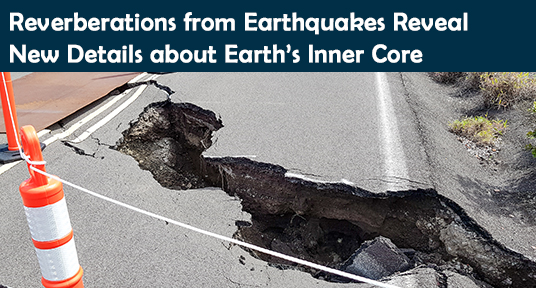A new study published in Nature Communications has used the reverberations from earthquakes to reveal new details about the structure of the Earth’s inner core. For decades, there has been evidence to suggest that the inner core is made up of distinct layers, but their properties have remained mysterious. To better understand the inner core’s structure, researchers used multiple seismometers to examine how seismic waves are distorted as they pass through the solid ball of iron nickel at the Earth’s heart. The researchers found that the waves travelled differently through the innermost inner core than through the outer part.


